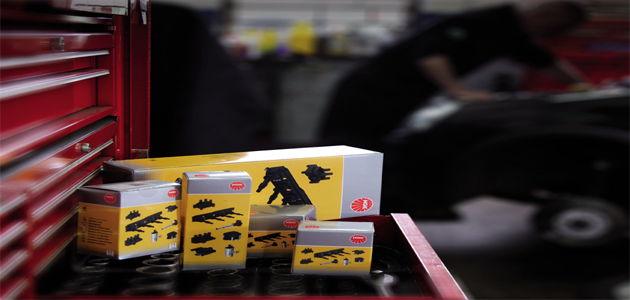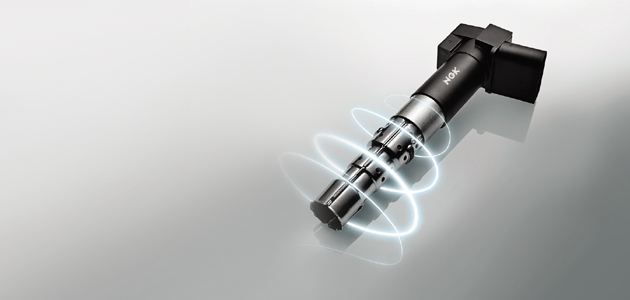
The operating principle of the ignition coil is essentially the same for all types – whether the classic can-type coil, or in a coil rail system. The device contains two copper wire windings and a laminated iron core, with the copper wires featuring insulating materials to prevent short circuits.
The battery current fed through the primary winding produces a magnetic field whose strength is further increased by the iron core.
When this circuit is opened, the magnetic field collapses, inducing a high voltage pulse in the secondary coil. This pulse is fed through the H.T. connection to the spark plugs. As an integral part of the ignition system, the coil produces the high voltage required to produce the electric spark to ignite the fuel. The relatively low battery voltage, nominally around 12V, is then transformed to up to 45,000V.

How can 12V produce a high-voltage pulse?
The secondary coil consists of a very fine wire with many more windings than the primary coil. The winding ratio is typically between 1:150 and 1:200. This has the effect of multiplying the voltage whilst reducing the current. The voltage output from the device depends upon:
- The value of primary circuit current
- The ‘turns ratio’ of the windings
- The change time of the coil
- The rate of magnetic field collapse
The different types of ignition coil
The last few decades have seen great improvements in ignition technology. As a consequence, various new ignition coil types have been developed. Depending on the age of the vehicle, the engine design and the ignition system, any of these ignition coil designs might be used:
Can-type ignition coils
In older vehicles and vintage cars, you might still find what is commonly known as a can-type ignition coil. Some older versions of this type are filled with oil, which acts as an insulator and a coolant, but most have a more modern dry insulation design.
Distributor coils
For this type, the induced high voltage reaches the individual spark plugs via a mechanically driven distributor mechanism.
Ignition blocks
Ignition blocks contain several ignition coils, which are connected by H.T. cables to each plug. This ignition coil type is available with single or dual spark technology. In single-spark ignition blocks, each ignition cable supplies the high voltage pulse to one cylinder. In dual-spark blocks, the high voltage pulse is fed simultaneously to two cylinders: one that is on the power stroke, and the other being on the exhaust stroke and, thus, has a “wasted spark”.
Pencil or coil on plug ignition coils
This ignition coil type is mounted directly on top of the spark plug. The high voltage pulse is fed straight to the spark plug, minimising power loss. As pencil ignition coils are mounted in the spark plug tunnel, they do not take up space in the engine compartment. Pencil ignition coils are used in vehicles with electronic ignition systems and are available as single-spark or dual-spark coils.
Ignition coil pack systems
So called ‘coil packs’ combine a number of pencil ignition coils mounted within a single component, known as a ‘rail’. This rail is then placed across a bank of several spark plugs.










